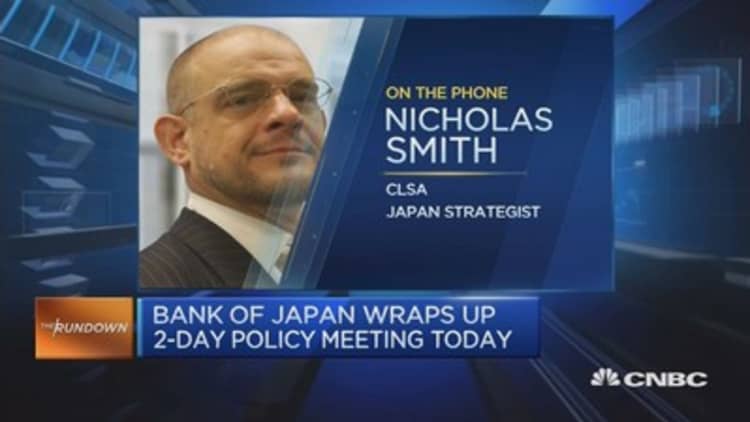Bank of Japan policymakers contested how much information to disclose about a possible exit
from quantitative easing, with several worrying about the risks of doing so given the BOJ is still far off its 2 percent inflation goal, minutes of the central bank's June 15-16 meeting
showed on Tuesday.
Some members said the BOJ needed to clearly explain how it would manage policy and how an exit would impact the central bank's finances, the minutes showed.
However, several members said consumer prices are still far from the central bank's 2 percent inflation target, and disclosing this information too soon could cause market turbulence.
These members also said it is important for the BOJ to continue with its internal analysis on an exit from quantitative easing.
The minutes highlight the difficult path the BOJ must navigate as worries about the sustainability of its current policy framework start to grow.
"Some members said it was important to thoroughly explain the BOJ's thinking on how it will manage policy and the impact on the central bank's finances to gain understanding," the
minutes showed.
"Several members said providing uncertain information before meeting the inflation target could cause market confusion, so it is important to continue internal analysis on this subject."
The BOJ kept monetary policy on hold at the meeting and upgraded its assessment of private consumption for the first time in six months.
At a subsequent meeting on July 19-20, the BOJ pushed back the timing of meeting its 2 percent price target for the sixth time since it began its quantitative easing programme in 2013.
It now expects inflation will not reach that level until sometime in the fiscal year ending in March 2020, but private-sector economists doubt this is likely.

The BOJ has a short-term interest rate target of minus 0.1 percent and buys debt to keep the 10-year government bond yield around zero percent.
The central bank also has a loose guideline to keep buying government bonds so its holdings increase at an annual pace of 80 trillion yen ($714 billion), which many markets watchers say is unsustainable.
Some economists worry about the potential for losses on the government bonds that the BOJ holds on its balance sheet when the central bank exits from quantitative easing.
Others worry that bond market liquidity could dry up and yields could become very volatile unless the BOJ changes its current framework.
It is uncertain if the members who pushed for disclosure on the BOJ's exit strategy will remain on the policy board.
Board members Takehiro Sato and Takahide Kiuchi, who dissented to most of BOJ Governor Haruhiko Kuroda's monetary-easing steps, have departed after their terms expired this month and will be replaced.

